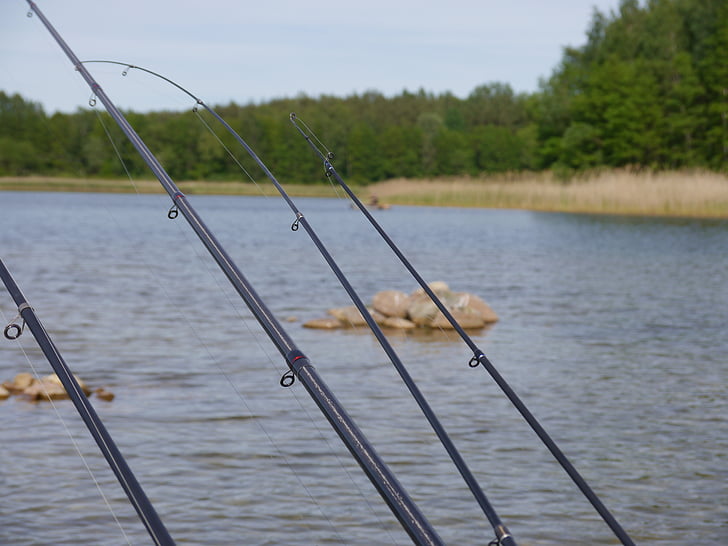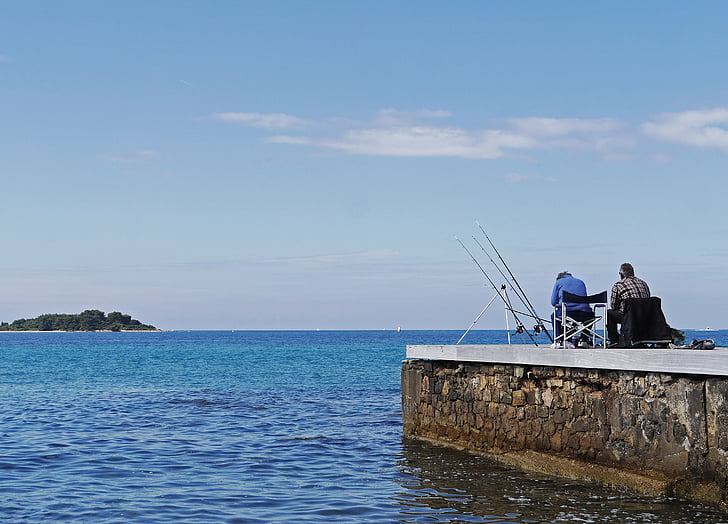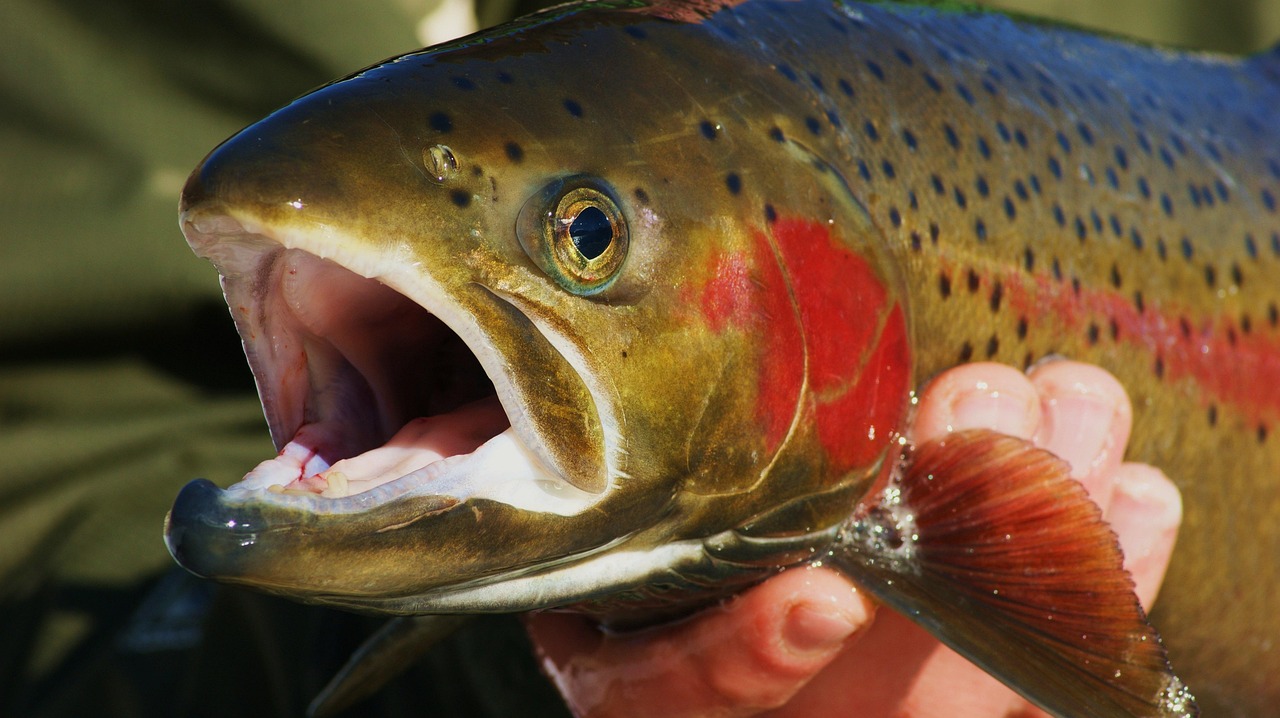As an avid angler in Oklahoma, the decision to invest in a lifetime fishing license is one that keeps on giving. With endless fishing opportunities across the state, your lifetime license provides you year-round access to a wide variety of fish species. However, many anglers fail to fully take advantage of the privileges this license offers. Whether you’re a seasoned pro or a beginner, this in-depth guide will help you maximize the benefits of your Oklahoma Lifetime Fishing License in 2025.
In this guide, I’ll walk you through expert tips on how to fully utilize your license, from the key regulations and cost breakdown to specific fishing hotspots, seasonal techniques, and the best species to target. Plus, we’ll cover free fishing days and other critical details so you can fish like a local all year long.
Understanding Your Oklahoma Lifetime Fishing License
Before you dive into the water, it’s essential to understand exactly what your Oklahoma Lifetime Fishing License includes and the key regulations that apply to it.
License Costs (2025)
- Resident Lifetime Fishing License: $225
- Nonresident Lifetime Fishing License: $1,075
The resident license provides lifetime fishing privileges for all public waters in Oklahoma, including access to special fishing areas like paddlefish snagging, trout fishing, and land access for certain bodies of water.
Key Benefits
- No Annual Renewals: With a lifetime license, you’ll never need to buy another fishing license for the rest of your life.
- Free Annual Renewal: Although your license lasts for life, you’ll need to renew it annually at no additional cost. This simple process can be done online via the Oklahoma Department of Wildlife Conservation (ODWC) website or at license vendors across the state.
- Special Privileges: Your license covers not just general fishing but also specialty activities like paddlefish snagging, trout fishing, and specific land access fishing permits.
Eligibility and Regulations
- Eligibility: To qualify for the resident lifetime fishing license, you must have been a legal resident of Oklahoma for at least six months. The license is available to all ages.
- Fishing Regulations: Even with a lifetime license, you must comply with Oklahoma’s fishing regulations. This includes species-specific limits, fishing seasons, and the need for additional stamps (like trout stamps) for specific activities. Stay updated on regulations by checking the ODWC website regularly.
Maximize Your Fishing Year-Round with These Seasonal Tips
Oklahoma’s waters offer diverse fishing opportunities year-round. From spring bass spawning to winter blue catfish, there is something for every angler. Here’s a seasonal breakdown to help you maximize your fishing experience.
Spring Fishing Tips: Targeting Spawning Bass, Crappie, and Catfish
Spring is one of the best times to capitalize on your lifetime fishing license. With warming temperatures, many species become more active, especially bass, crappie, and catfish.
Bass Fishing
Spring is bass spawning season, making it a great time to target both largemouth and smallmouth bass. Focus on shallow points, creek channels, and drop-offs. During the prespawn, crankbaits, lipless crankbaits, and jerkbaits are excellent for covering large areas and attracting aggressive bass. Once bass move into spawning areas, switch to slower presentations like Texas-rigged lizards, wacky-rigged worms, and jigs.
Top Bass Lakes:
- Lake Texoma: Known for big smallmouth and largemouth bass, perfect for sight fishing on rocky points.
- Grand Lake O’ the Cherokees: Expansive and full of coves, ideal for pitching jigs and creature baits to docks and submerged structures.
- Lake Eufaula: Oklahoma’s largest lake, offering ample shallow cover for spawning bass.
Crappie Fishing
Crappie are known for their active spring spawning behavior, making them a perfect target for anglers looking for fast action. They prefer shallow waters with structures like brush piles and submerged logs. Use small jigs, minnows under bobbers, or spider rigs to catch crappie in the 1-6 foot depth range.
Top Crappie Lakes:
- Broken Bow Lake: Clear waters with brush piles for concentrated spawning crappie. Use spider rigs or slow trolling jigs.
- Sardis Lake: Diverse habitats with flooded timber and brush piles, ideal for vertical jigging or casting small tubes.
- Fort Gibson Lake: Known for its large crappie populations, fish around docks, creek channels, and submerged structure.
Catfish
Catfish are highly active during the spring, feeding heavily before spawning. Focus on areas near creek mouths, flats, and river channels to target blues, channels, and flatheads. Use cut bait (like shad or skipjack) or live bait for the best results.
Top Catfish Lakes:
- Lake Texoma: Famous for blue catfish, perfect for drifting cut bait on windblown flats or river channel edges.
- Keystone Lake: Known for both blues and channels, especially near the confluence of the Arkansas and Cimarron rivers.
- Oologah Lake: Holds large flatheads that become active in spring, especially around submerged structure.
Summer Fishing Strategies: Crappie, Catfish, and Striped Bass
As the temperature rises, adjust your methods to stay productive during the summer months, especially for species like crappie, catfish, and striped bass.
Night Fishing for Crappie
Summer heat can make daytime fishing difficult, but crappie often feed at night. Use floating lights or lanterns to attract baitfish, which will, in turn, bring crappie closer. Vertical jigging or using minnows under the light is an effective tactic.
Top Night Fishing Lakes:
- Eufaula Lake: Popular for night fishing, with abundant crappie in deeper structures like stump fields.
- Hudson Lake: Small and accessible, great for fishing around docks and the main lake channel.
- Wister Lake: Known for clear water and abundant crappie that feed under lights.
Drift Fishing for Catfish
Drift fishing is an excellent way to cover water and locate active catfish. Use a drift rig with cut or prepared bait, focusing on river channels, sandbars, and other current-rich areas where catfish tend to congregate.
Top Drift Fishing Rivers:
- Arkansas River: Loaded with blue and channel catfish. Focus on river bends and deep holes for the best catch.
- Cimarron River: Offers great drift fishing opportunities, especially around sandbars and current seams.
- Red River: A prime location for blue catfish, especially along the river’s main channel edges and flats.
Topwater Striped Bass Fishing
Striped bass are active during the early mornings and late evenings, chasing schools of shad to the surface. Use topwater lures like Zara Spooks, poppers, and Chug’n Spooks to trigger explosive strikes.
Top Striped Bass Lakes:
- Skiatook Lake: Known for clear water and abundant shad, making it a top location for striped bass fishing.
- Kaw Lake: Offers great opportunities for topwater striped bass fishing, especially at dawn.
- Keystone Lake: Another excellent striper lake with surface activity throughout the summer.
Fall Fishing: Paddlefish Snagging, Trout, and Bass Feeding Frenzy
Fall is one of the best fishing seasons in Oklahoma, with fish feeding heavily before winter sets in. Take advantage of this time to target paddlefish, trout, and bass.
Paddlefish Snagging
Fall is prime paddlefish snagging season, especially below dams and near tributary mouths. Use a heavy rod, large reel, and 12/0 hook to snag these prehistoric giants, which can weigh over 100 pounds.
Top Paddlefish Lakes:
- Grand Lake (Pensacola Dam): Known for large populations of paddlefish, especially in the current seams below the dam.
- Keystone Lake (Keystone Dam): Excellent snagging opportunities in the tailrace and Arkansas River confluence.
- Fort Gibson Lake: Fish the Neosho and Arkansas River arms for abundant paddlefish.
Trout Fishing
Fall is when the ODWC stocks trout in several lakes, providing excellent fishing opportunities for those with a lifetime fishing license.
Top Trout Locations:
- Lower Illinois River: A tailwater fishery known for consistent trout stocking and excellent fishing conditions.
- Blue River: Offers year-round trout fishing thanks to cold water releases.
- Lower Mountain Fork River: A great spot for larger brown and rainbow trout, especially with flies like San Juan worms or small streamers.
Fall Bass Fishing
As temperatures cool, bass feed aggressively before winter. Focus on offshore structures like humps and points, using lipless crankbaits, jigs, and swimbaits to attract strikes.
Top Fall Bass Lakes:
- Broken Bow Lake: Excellent for targeting bass on offshore structure in clear waters.
- Tenkiller Lake: Known for productive fall bass fishing, especially along main lake points.
- Kaw Lake: A great location for offshore bass fishing with jigs and swimbaits around roadbeds and creek channels.
Winter Fishing: Blue Catfish and Urban Trout Fishing
Winter may seem like a slow fishing season, but blue catfish remain active, and Oklahoma offers urban trout opportunities.
Winter Blue Catfish
Blue catfish can still be caught in winter, especially in areas with current, like tailwaters below dams. Use slow presentations with cut bait to fish deeper pools in major rivers.
Top Winter Blue Cat Lakes:
- Below Keystone Dam: Excellent fishing for blue catfish in the cold months, especially in the Arkansas River.
- Below Eufaula Dam: Known for big blue cats in the tailwaters.
- Below Fort Gibson Dam: Fish the Arkansas and Neosho rivers for winter blues.
Urban Trout Fishing
Oklahoma stocks urban ponds with trout during winter, making it easy to fish even when it’s cold outside. These ponds are perfect for quick outings, especially with kids.
Top Urban Trout Ponds:
- Dolese Youth Park Pond (OKC): A great location for easy access trout fishing during winter.
- Mitch Park Pond (Edmond): Perfect for quick, local trout trips.
- Robbers Cave State Park: Scenic and stocked with trout throughout the winter months.
Additional Considerations: Free Fishing Days and Regulations
Free Fishing Days
Oklahoma offers Free Fishing Days, during which residents can fish without needing a fishing license. This is an excellent opportunity for beginners to experience fishing or for seasoned anglers to enjoy a day on the water without worrying about the usual licensing fees. These days are perfect for families, groups, or those looking to introduce someone new to the sport of fishing.
- 2025 Free Fishing Days:
- First Weekend in June: The traditional Free Fishing Days are typically held on the first Saturday and Sunday of June. This is a great time to fish in Oklahoma, as the weather is warm and fish are actively feeding.
- Select Holidays: Additional Free Fishing Days are often scheduled during major holidays like Memorial Day and Labor Day. However, dates for holidays can vary from year to year. For the exact dates for 2025, be sure to visit the Oklahoma Department of Wildlife Conservation’s Free Fishing Days page to confirm the current year’s schedule and updates.
Fishing Regulations
Even though your Oklahoma Lifetime Fishing License gives you lifetime access to fishing, you must still follow state regulations, which may change each year. This includes restrictions on specific species, fishing seasons, and certain methods of fishing, as well as the need for extra permits or stamps for specific activities. Failure to follow these regulations can result in fines or other penalties.
- Stay Informed About Annual Updates:
Each year, Oklahoma may update fishing regulations, especially around protected species, fishing limits, or specific waterway restrictions. Make sure to check the ODWC’s Fishing Regulations page before you head out. You can access the most up-to-date regulations for 2025 by visiting the Oklahoma Fishing Regulations page on the ODWC website.
- Species-Specific Limits:
There are certain bag and size limits for different species. For example, while you can catch unlimited numbers of certain species like bluegill or sunfish, species like bass and walleye have strict catch limits, such as a 5-fish limit for largemouth bass (with certain size restrictions). Be sure to check for species-specific limits in your area, as they can vary by location and season.
- Fishing Seasons:
Some species, such as trout and paddlefish, have designated seasons, and fishing for them outside these periods is prohibited. For example, paddlefish snagging is allowed only during certain times in the spring and fall. For more information on specific seasons, refer to the ODWC’s Seasonal Fishing Regulations.
- Special Permits:
Certain activities, like fishing for trout in certain waters or participating in paddlefish snagging, require special stamps or permits. These can usually be purchased along with your lifetime fishing license, but always check with the ODWC to ensure you’re properly equipped for specialized activities. Visit the ODWC Special Permits page to learn more about necessary permits.
By keeping up with these regulations and understanding any new updates, you can ensure your fishing trips are both fun and compliant with Oklahoma’s laws.
Conclusion: Unlock the Full Potential of Your Lifetime License
Your Oklahoma Lifetime Fishing License is more than just a one-time purchase — it’s a gateway to endless fishing adventures across the state. By understanding season-specific strategies, knowing the top fishing spots, and staying informed about the latest regulations, you can maximize the value of your license. Get out there and fish confidently, knowing you’re ready to take full advantage of all that Oklahoma’s waters have to offer!
For more information, visit the Oklahoma Department of Wildlife Conservation.
What happens if I lose my lifetime license?
If your Oklahoma lifetime fishing license is lost or destroyed, you can obtain a free replacement from the Wildlife Department. Contact the ODWC headquarters or visit their website for instructions on requesting a duplicate license.
Can I fish in other states with my Oklahoma lifetime license?
No, the Oklahoma lifetime fishing license is only valid for fishing within the state of Oklahoma. If you plan to fish in other states, you’ll need to purchase the appropriate licenses for those jurisdictions.
Can I add an Oklahoma hunting license to my lifetime fishing license?
Yes, you can upgrade your lifetime fishing license to include hunting privileges by paying the difference in cost between the two license types. Contact the Wildlife Department for current pricing and upgrade instructions.
Do I need a trout permit if I have a lifetime fishing license?
No, your Oklahoma lifetime fishing license includes trout permit privileges, so you can fish all state designated trout waters without an additional permit.
How do I renew my lifetime fishing license each year?
To renew your lifetime fishing license, simply go online to the Wildlife Department website or visit a license dealer and request your free annual renewal. You’ll need to provide your customer ID number and verify your contact information.


